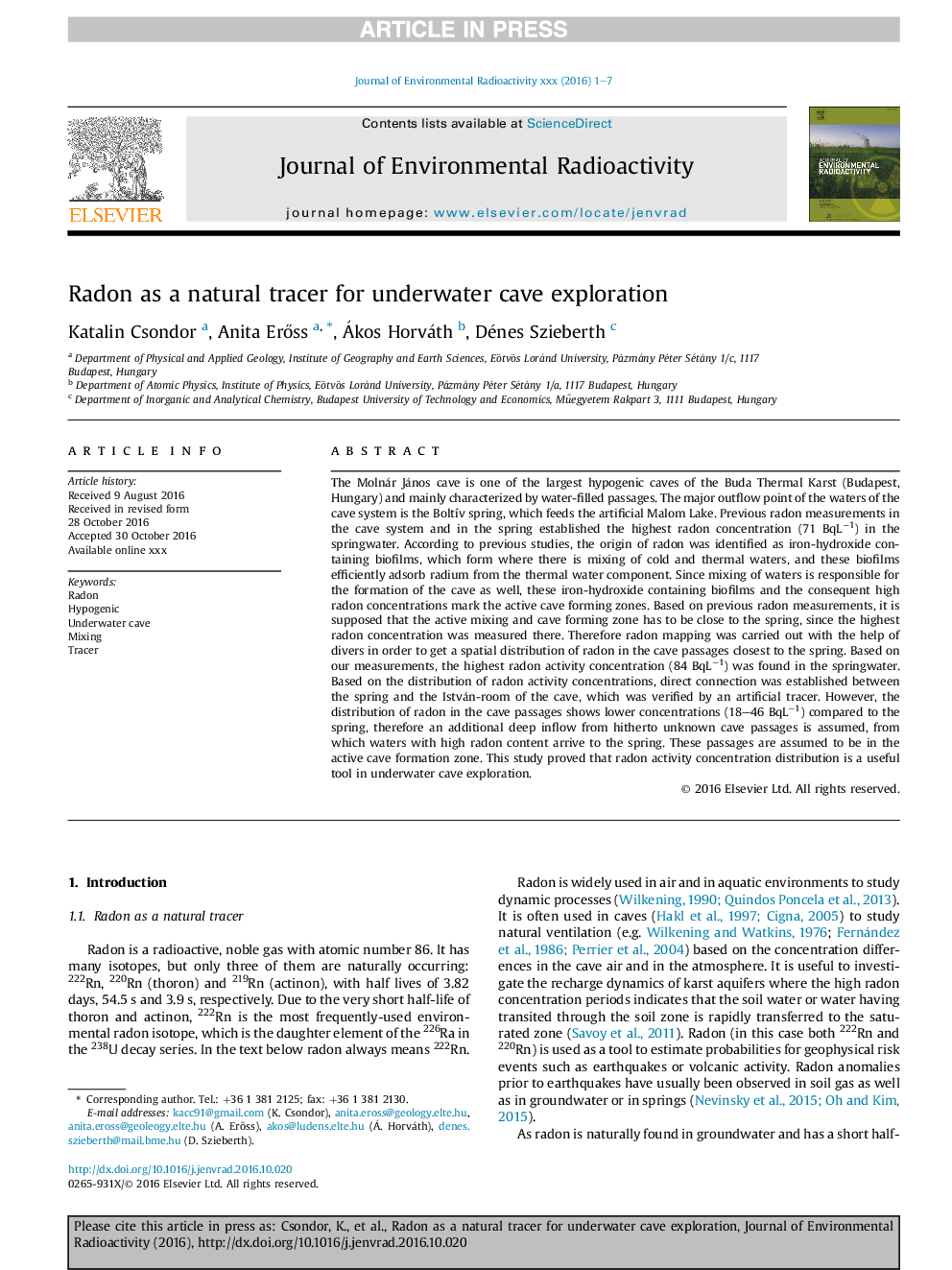| کد مقاله | کد نشریه | سال انتشار | مقاله انگلیسی | نسخه تمام متن |
|---|---|---|---|---|
| 5477497 | 1521566 | 2017 | 7 صفحه PDF | دانلود رایگان |
عنوان انگلیسی مقاله ISI
Radon as a natural tracer for underwater cave exploration
ترجمه فارسی عنوان
رادون به عنوان یک ردیاب طبیعی برای اکتشاف غار زیر آب
دانلود مقاله + سفارش ترجمه
دانلود مقاله ISI انگلیسی
رایگان برای ایرانیان
کلمات کلیدی
رادون، هیپوژنتیک، غار زیر آب مخلوط کردن، ردیاب
موضوعات مرتبط
مهندسی و علوم پایه
مهندسی انرژی
انرژی هسته ای و مهندسی
چکیده انگلیسی
The Molnár János cave is one of the largest hypogenic caves of the Buda Thermal Karst (Budapest, Hungary) and mainly characterized by water-filled passages. The major outflow point of the waters of the cave system is the BoltÃv spring, which feeds the artificial Malom Lake. Previous radon measurements in the cave system and in the spring established the highest radon concentration (71 BqLâ1) in the springwater. According to previous studies, the origin of radon was identified as iron-hydroxide containing biofilms, which form where there is mixing of cold and thermal waters, and these biofilms efficiently adsorb radium from the thermal water component. Since mixing of waters is responsible for the formation of the cave as well, these iron-hydroxide containing biofilms and the consequent high radon concentrations mark the active cave forming zones. Based on previous radon measurements, it is supposed that the active mixing and cave forming zone has to be close to the spring, since the highest radon concentration was measured there. Therefore radon mapping was carried out with the help of divers in order to get a spatial distribution of radon in the cave passages closest to the spring. Based on our measurements, the highest radon activity concentration (84 BqLâ1) was found in the springwater. Based on the distribution of radon activity concentrations, direct connection was established between the spring and the István-room of the cave, which was verified by an artificial tracer. However, the distribution of radon in the cave passages shows lower concentrations (18-46 BqLâ1) compared to the spring, therefore an additional deep inflow from hitherto unknown cave passages is assumed, from which waters with high radon content arrive to the spring. These passages are assumed to be in the active cave formation zone. This study proved that radon activity concentration distribution is a useful tool in underwater cave exploration.
ناشر
Database: Elsevier - ScienceDirect (ساینس دایرکت)
Journal: Journal of Environmental Radioactivity - Volume 173, July 2017, Pages 51-57
Journal: Journal of Environmental Radioactivity - Volume 173, July 2017, Pages 51-57
نویسندگان
Katalin Csondor, Anita ErÅss, Ákos Horváth, Dénes Szieberth,
